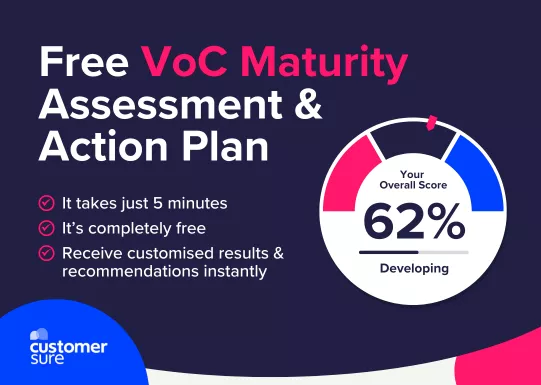

A lot of time can be spent developing customer surveys. Who to ask, when to ask, what questions, what survey method do we use, etc. There are certainly a few variables to consider and think through.
The feedback programme is discussed, weighed up, and surveys are produced and tested. Then after careful planning, customers are contacted and asked to provide their thoughts and feedback. And many of your customers will willingly provide this feedback. Great, you’ll get some useful information back, but that doesn’t solve all your problems.
We speak to lots of companies, of all sizes and across all sectors, B2B and B2C. And something we occasionally find during initial conversations is that the all-important feedback from customers, those pieces of praise or frustration, those nuggets of ideas, are locked away and only seen by a handful of eyes in departments such as customer experience, marketing, or customer service. Such a tragic waste.
Everyone in the organisation has an impact on customer experience one way or another, even back office departments like Accounts. So they’ll all benefit from being able to read verbatim comments from customers.
Of course, you don’t need to forward every single piece of customer feedback – quantitative and qualitative – to every person in the company. This might make you quite unpopular quite quickly, but the feedback and insights are gold dust for internal comms across the organisation.
Consider the different audiences within your organisation. The executive team, sales & account management, accounts & billing, customer service & support, marketing, logistics & deliveries, third party partners, etc. You’ll know the different departments or functions within your organisation which interact with customers.
Each has their own bearing on the customer experience, to a lesser or greater degree, so it is important the customer’s voice reaches them so they are aware of customer satisfaction generally, and to help them manage and make decisions which will shape processes, systems, and behaviours.
We work extensively with our clients on how best to share feedback across the organisation. Key areas to consider are frequency and relevance. A top line performance summary might be interesting and relevant to all departments, but more specific feedback needs to be delivered to areas where it is relevant, and action can be taken where appropriate.
When customer feedback is coming in on a continual basis, the process of sharing the feedback with colleagues needs to be something which isn’t a significant burden on time or resources.
Customer feedback digests are one such tool we’ve developed to help our clients share feedback around the organisation. These customisable mails enable the feedback programme owner to specify who receives what and how frequently. The recipient can also log-in to our software to view all feedback and satisfaction data which is relevant to them and their role.
These regular pieces of communication help keep the customer’s voice front and centre, so everyone from the exec team to department managers to individual service centre staff receive a summary which is relevant to them. Then, depending on their role they can either respond quickly, if it’s a cry for help, or make changes to products, services or processes if it’s a good suggestion for improvement.
In your own customer feedback programme consider the data and comments you collect back. How is it used? Are those pieces of feedback shared effectively with other parts of the business?
The reason for collecting customer feedback is to help solve customers’ problems and make informed decisions which will ultimately increase customer satisfaction and loyalty. Make sure relevant insights find their way to different areas of the business on a regular basis and make discussing customer feedback an agenda item in department meetings.
We’ve helped hundreds of companies to collect customer feedback, respond to it and use it to improve business performance with our customer feedback tools and expertise. If you’d like to see an example of our customer feedback digests or get some ideas about how best to share feedback across the organisation, get in touch.

Gain a clear view of how mature your VoC programme is, and receive tailored recommendations to take it to the next level.
Take the assessment »